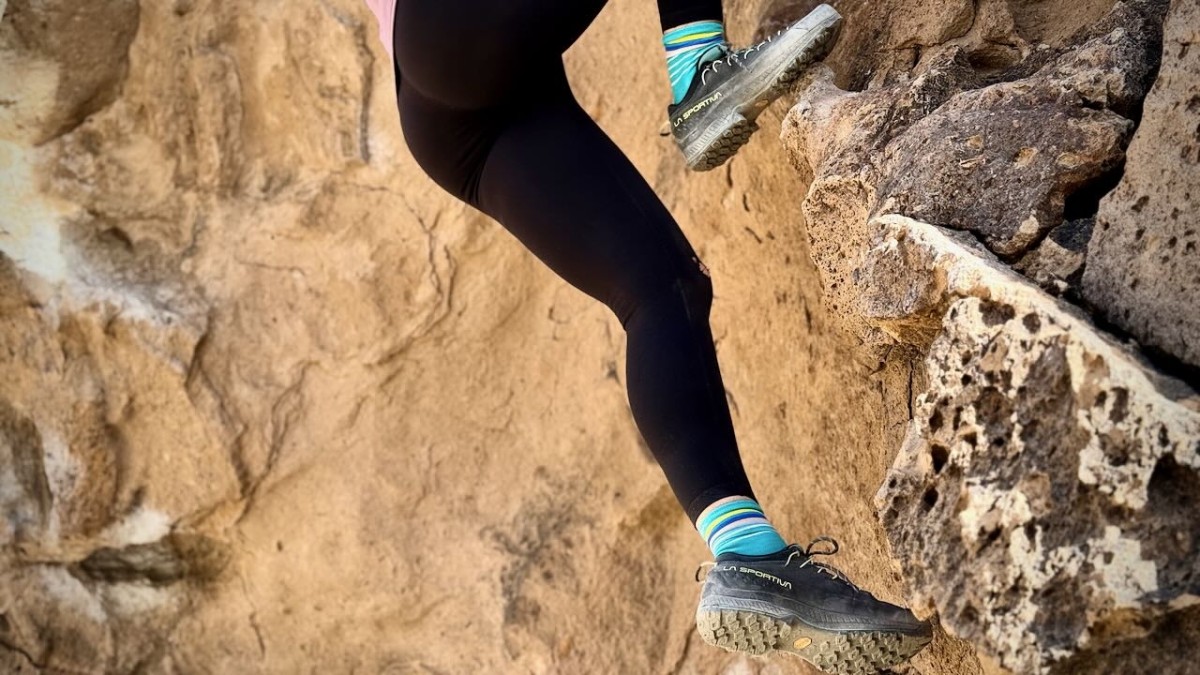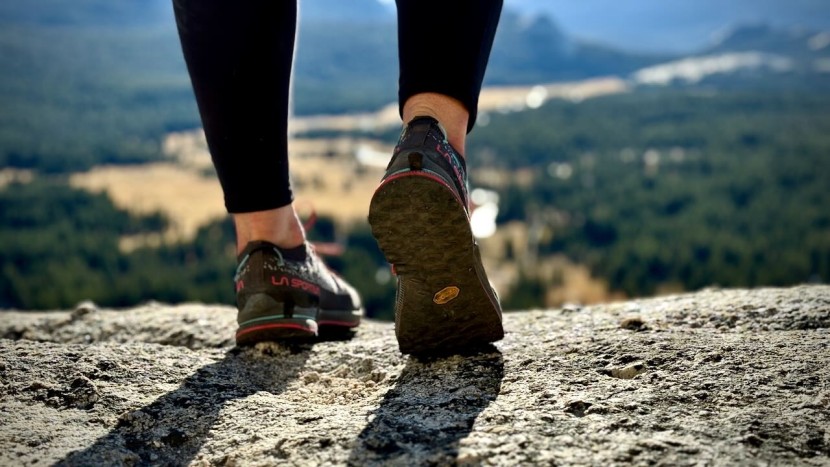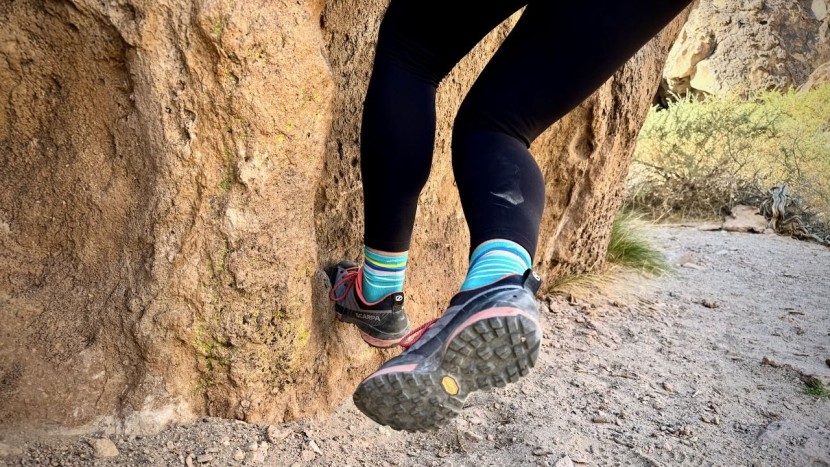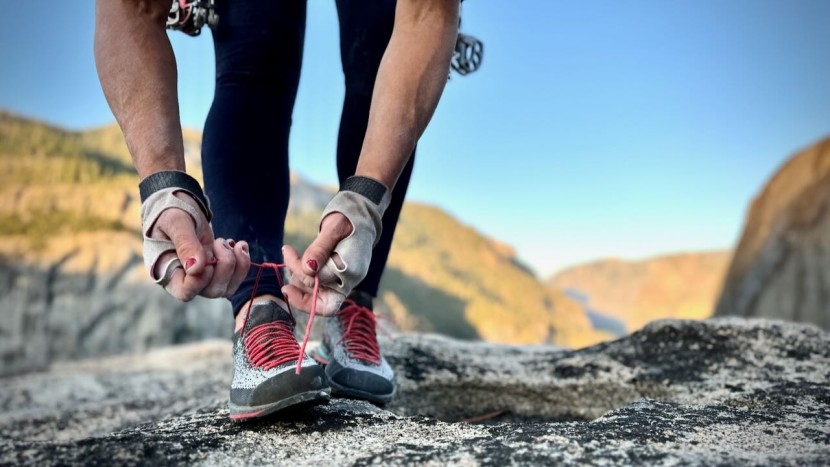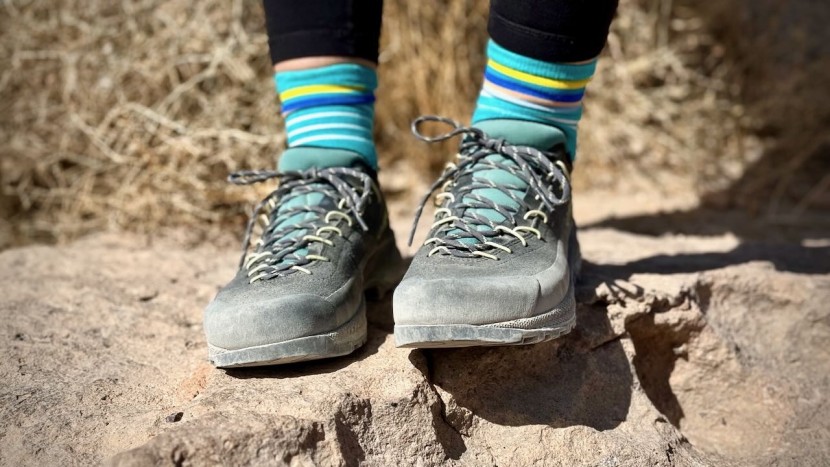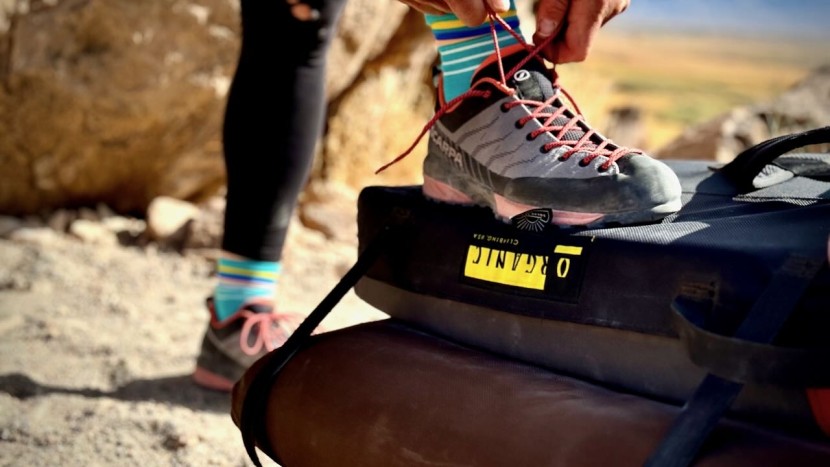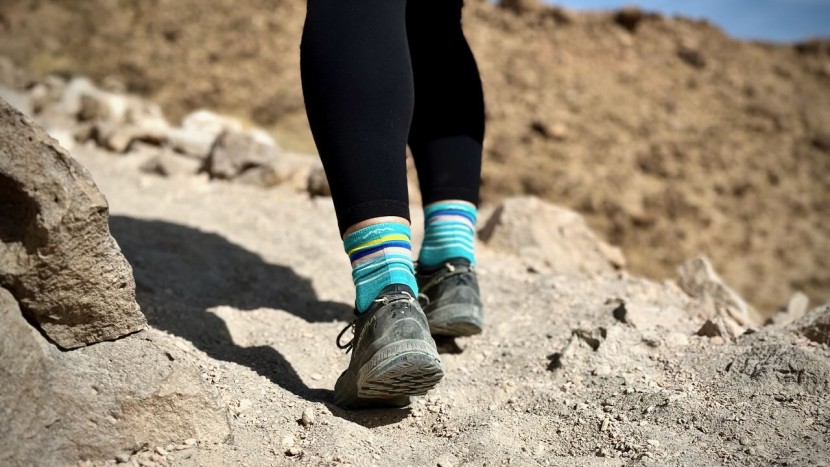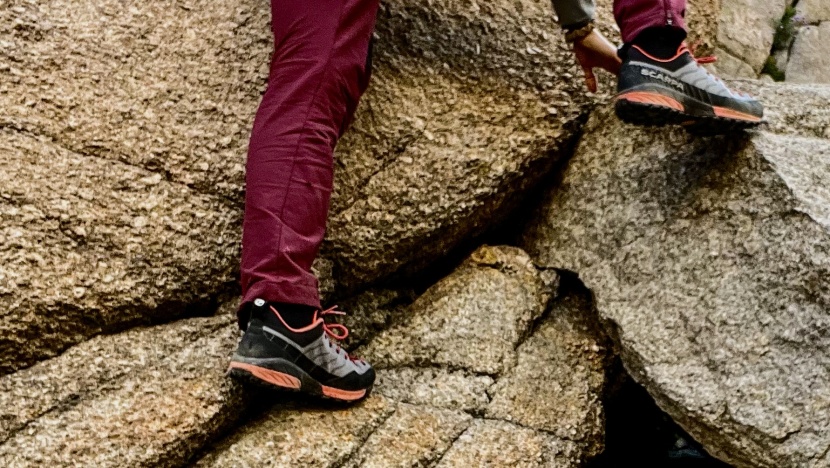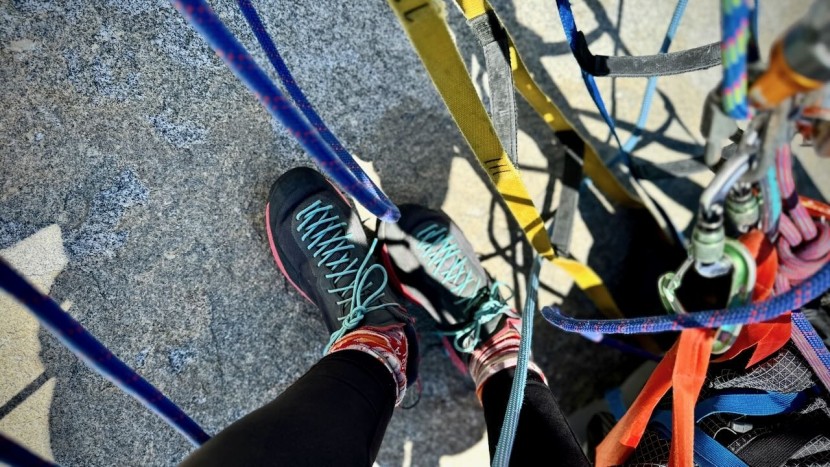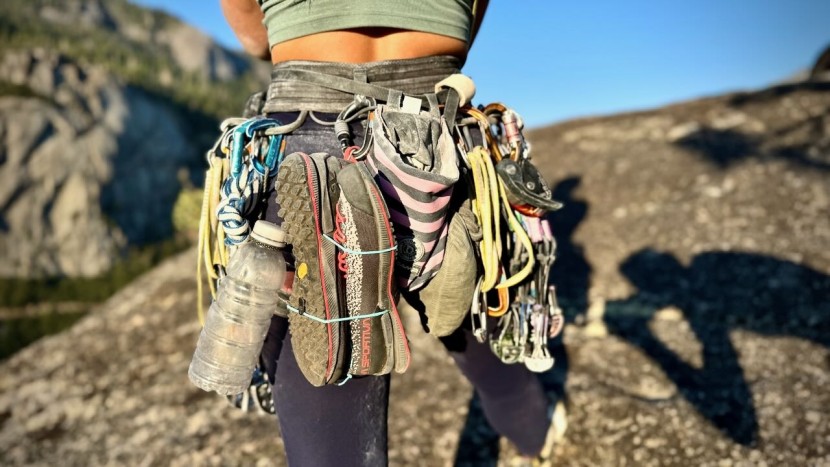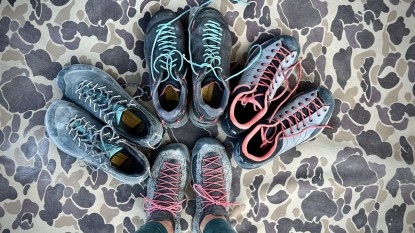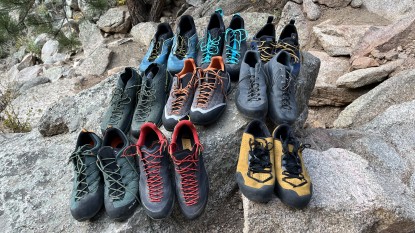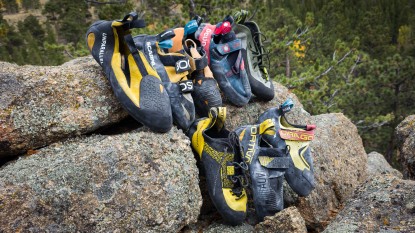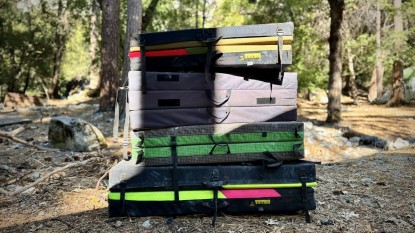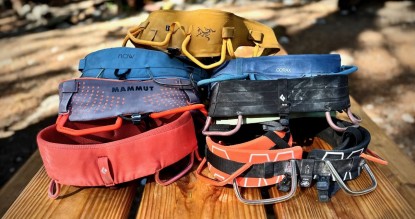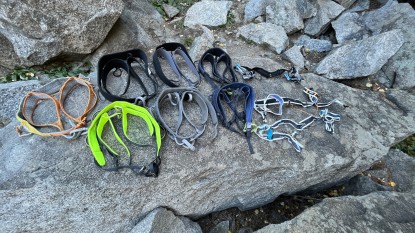What exactly are approach shoes, and do I need them? If you're not sure what kind of footwear is best for your adventures, you've come to the right place. There are so many kinds of shoes out there, from hiking shoes to trail runners, lightweight approach shoes to burly mountain boot hybrids. Approach shoes are a highly specialized product that provide a very niche performance when it comes to navigating slippery boulders, low fifth class approaches, and moving through talus field. Finding the perfect tool for the job just might be the ticket to unlocking your biggest objectives.
Approach Shoes 101
Approach shoes are, simply, the blend of a technical rock climbing shoe and a hiking shoe. They are designed to help climbers access their favorite routes, often involving steep sections of third- and fourth-class scrambling. In order to reach some of these peaks or routes, climbers recognized that they needed a comfortable shoe that remained supportive, especially when shouldering heavy loads or ascending a big wall. These shoes also needed to feature a sticky rubber outsole that allowed for better grip and precision when moving over a variety of terrain.
Without a specialized approach shoe, you may find yourself stuck. It's impractical to carry a heap of different shoes with you, so approach shoes aim to be one product that can do it all. You can strap crampons to them, climb technical rock in them, and even hike on nice established trails with them. If you're going into the mountains, a solid pair of approach shoes may be all you need.
Many modern and skilled rock climbers may even choose to climb whole fifth-class routes in their approach shoes. While in some ways this footwear is a specialty item for climbers, it can also have multiple uses and be a great footwear option even if you aren't a rock climber or planning to be on technical terrain. In this article, we go over the various functions shoes of this type can serve, as well as discuss all the things you will need to know and consider if you're in the market to buy a pair for yourself.
What Make These Shoes Different?
One way an approach shoe is different from a basic hiking boot or shoe is the sticky rubber on the tread and rand (the rubber part that extends partway up the top of the shoes). This sticky rubber is the climbing shoe part of the hybrid. It is a big part of why approach shoes are safer and more beneficial when you have to cross boulder or talus fields on the approach or when part of the approach requires you to climb over easy fifth class terrain that require extra traction and precision than what a typical hiking or running shoe can deliver. This sticky rubber extends upward from the outsole tread and wraps around the toe box and sometimes up and around the heels.
Different Types of Footwear for an Approach
Approaching a climbing route is, often, just hiking. To hike, there are many types of shoes you could wear, and sometimes a different style may work better. Some climbers prefer to use regular hiking shoes or boots, trail running shoes, or mountaineering boots for their hike into the climb instead.
If you will be traveling over mostly snow or ice, especially if you think it could be cold enough to stay frozen solid, then you might want or need crampons. In that case,mountaineering boots would be preferred over any other footwear. Some of these approach shoes are capable of accepting a strap-on, lightweight (usually aluminum) crampon, but if the snow or ice is steep enough to force you onto the front points of your crampons, this is not your best or safest option.
If your approach is very short or if the majority of it is on a well-maintained trail, then regular hiking or trail running shoes could also be viable, comfortable, and more cushioned options. The situations when an approach shoe is ideal are when your hike is long enough that you need the comfort and support that a hiking shoe would provide, but you also need some of the dexterity and traction that a climbing shoe offers due to more difficult terrain on at least some sections of the approach or actual climbing route. If your approach doesn't have any talus or low-angle rock, however, you may not need all the bells and whistles of an approach shoe.
Let's Talk About Fabric
There are two main fabric types used in approach shoe uppers: leather and knit mesh. We'll describe the pros and cons of each to help you decide which is the best for your adventures.
Knit & MeshShoes that feature a knit upper design typically receive high marks in this review. It's a lightweight fabric that comes in handy when you're planning to clip your shoes to your harness or stuff them in a backpack for a multi-pitch rock climb. Routes like the Rostrum in Yosemite Valley are perfect for these knit mesh uppers as the approach is short and you'll need to carry everything out of the canyon as you ascend the route. This material is flexible and low-profile, aiding in both packability and crack climbing skills. Just be aware that the soft upper does not provide the same protection as a leather or beefy mesh material when torquing your foot inside the crack. Another important feature of knit mesh is its exceptional breathability.
But with all things, there's a downside to this lightweight performance. This material does not provide the same durability as a heavier and more bomber construction. After one season of big wall climbing in Yosemite, the knit mesh approach shoes that we tested were completely toast. To be fair, they really are not made for that environment, but we couldn't resist using them on walls when they're so light and yet remain very supportive. Additionally, they have no water-resistant properties whatsoever. That being said, they dry surprisingly fast, but if your plans have you traveling extensively in wet or snowy environments, this is not the material for you.
Leather
The majority of approach shoes in this review have leather (or suede) uppers, and likely for good reason. This material is much more durable than knit and therefore is much better suited for alpine environments. It's also water-resistant, in some cases even waterproof, which is great when stream crossings or glacier travel are included in your approach. If you plan on crack climbing or big wall climbing, leather will keep the sides of the shoes intact much longer. Leather also provides a bit more support which is really helpful when traveling through uneven terrain.
On the downside, leather is much heavier, adding to a shoe's overall weight and diminishing the likelihood that we'd ever carry them on a big route. Leather also lacks breathability, which can be a huge downside to hiking many miles in hot or humid weather conditions.
Lace 'Em Up
Another quality that makes approach shoes different than an average hiking shoe is the lacing. In a typical hiking or running shoe, the laces start at the top of the shoe and stop about mid-foot. This provides plenty of security for traveling on established trails and mild terrain. But approach shoes take a note from climbing shoes here and extend their laces further down toward the toe. This adds to increased precision for traveling on technical terrain. These extended lacing systems allow the user to really cinch up the shoe to provide a snug fit and better sensitivity in the toe box for more precise edging and smearing. If you plan on traveling extensively in technical, fifth-class terrain, you'll want to look for a shoe with laces that extend far down toward the toe, as most of the shoes in this review do.
A Note on Sizing
If you're new to the approach shoe game, you may be wondering how the sizing works. In general, we size our approach shoes just like we size our hiking or running shoes. Because we primarily hike in our approach shoes, we want enough room in the front of shoe for our feet to swell a bit without becoming cramped. That being said, we don't want our shoes to be too big, since that could cut down dramatically on technical climbing precision. As always, we recommend trying on a variety of pairs to figure out which companies and sizes work best for you. Finding a great fit will add tremendously to your comfort while logging miles, and scrambling in semi-technical terrain. Typically, if the terrain is technical enough that we want a more precise fit, we'll just put our climbing shoes on anyway.
Potential Uses
If you've decided that yes, indeed, you do need an approach shoe, that's a great choice and will likely enhance your backcountry experience. In this next section, we'll describe a couple more nuanced situations in which having the right approach shoe is key.
Approaching Climbs
The primary use of any approach shoe is to get to the base of the climb, hence the name. This type of shoe combines the best features of both a hiking shoe and a climbing shoe but can be either more climbing oriented or more hiking oriented. For example, you might have a heavy pack to carry to a remote peak but will also be traveling over large sections of boulder and scree fields to get to the base of your chosen route. The ideal shoe for this scenario would prioritize hiking performance and focus more on supplying solid support through the midsole for a long hike with a heavy pack, yet also have strategically placed sticky rubber for enhanced grip through slippery technical terrain.
Similarly, if you're hiking out to a crag for a day of single-pitch climbing, chances are you'll be staying on fairly established trails the whole time. While you may prefer the security of a sticky rubber outsole, if this is the type of climbing you partake in the most, you may want to reconsider your footwear options.
A Note on High-Tops
Sometimes we need something with a bit more ankle stability and a bit more support without compromising the precision of sticky rubber designed for technical terrain. Currently, there are a few shoes on the market that also offer high-top versions of their approach shoes. These shoes are also available with Gore-tex membranes that essentially provide mid-cut versions of their popular low-cut approach shoes. These are excellent shoes for big alpine expeditions, like our recent trip to Argentine Patagonia. But there's a catch: neither are manufactured in women's-specific models, so finding a size that is small enough to fit your feet can be a limiting factor. If the available sizes work for you, we encourage you to try them out to make sure they fit properly. Because women's models are still less ample than men's, you may also want to check out the men's approach shoes review to see if there's anything else that suits your fancy. (Note: before some popular approach shoe models were manufactured in a women's fit, we knew plenty of women who wore the men's version as their go-to alpine shoe.)
Moderate Alpine Climbing and Scrambling
Another category of approach shoe use is for climbing easy alpine routes while forgoing the rock shoes altogether. This could be described as hiking several miles to the base of the climb in your shoes and then simply continuing the rest of the route without switching to climbing shoes. Think Cathedral Peak or Matthes Crest in Tuolumne Meadows where the technical climbing is easy fifth class and often doesn't require a snug-fitting TC-Pro. In this scenario, it is particularly important for the shoe to be well-rounded, providing enough support and stiffness through the midsole without sacrificing climbing ability and precision footwork.
When the route is long and moderate, wearing approach shoes for the climb itself can save your feet from pain, keeping you happy and confident all day. Also, if temperatures are on the lower end, climbing in your approach shoes lets you keep your socks on, a bonus point for having warm toes all day.
That being said, you don't have to be in the alpine to enjoy a nice scramble. Our testers loved romping around our favorite moderate routes in Yosemite without having to put tight, not-very-comfortable technical climbing shoes on. We were impressed with how well some of the slimmer models performed on moderate fifth-class rock.
Big Wall Climbing
Big walls are their own arena, and one not many climbers jump into, but it's worth noting that such objectives could require a different type of shoe. For aid climbing, a super-stiff sole is key for foot comfort when standing in ladders both on the sharp end as well as jumaring to follow. Aid climbers will often choose the heavier weight of a stiff shoe rather than destroy a lightweight knit mesh option.
Depending on your objective, you may just want something cozy to wear all day, or for multiple days in a row. You may also choose an approach shoe that offers solid climbing performance so that you don't have to switch over to climbing shoes for those mandatory free climbing moves you'll likely encounter on the route.
Descent Shoes
Another potential use for climbing shoes is for descending semi-technical terrain. Often (especially in places like Yosemite and Squamish), the approach is fairly straight-forward and could easily be done in hiking or trail running shoes-- sometimes even sandals. But the crux lies ahead. Many of our favorite multi-pitch routes have walk-off descents that require wandering around on slabs, talus, and scree. For these routes, we want a shoe that is light enough to clip to our harness so we can pop them on at the top of the route without being weighed down while trying to climb our best.
Conclusion
The most important thing to keep in mind when starting your approach shoe shopping is what types of adventures you'll be partaking in most frequently. While a wide variety of shoes can get you to a crag via an established trail, more niche shoes might be needed for those climbing big walls or mostly preparing for alpine scrambles. Deciding what purpose you want your shoes to serve will be the first step in helping you decide what fabric to look for and which metrics will be of the utmost importance. This review seeks to highlight the pros and cons of each approach shoe that we tested and give recommendations for the appropriate application or niche performance of each design.

